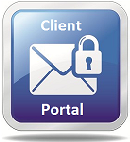While it’s usually true that the “rich get richer,” a proposed tax code will prove a remarkable exception if the House has its way. The legislation would mandate an annual required minimum distribution for retirement accounts exceeding $10 million and is aimed at accounts used as tax shelters by the rich rather than at the low-and middle-income savers who the tax-advantaged nest eggs were originally created to help.
The Covid-19 pandemic has had a significant impact on the labor market – mandated government lockdowns and workers’ and customers’ fears of contracting the illness resulted in businesses closing or temporarily cutting back and laying off or furloughing millions of employees. In April 2020, the unemployment rate reached 14.8%, the highest rate since such data started to be collected in 1948. While by September 2021 the unemployment rate had declined to 4.8%, millions of job openings went unfilled as former employees were reluctant to return to work. Some businesses still weren’t operating at full capacity because they weren’t able to find enough employees.
Married taxpayers have two options when filing their 1040 or 1040-SR tax returns. The first and most frequently used filing status is married filing joint (MFJ), where the incomes and allowable expenses of both spouses are combined and reported on one tax return. The joint status almost always results in the lowest overall tax. Spouses who file together are jointly liable for the tax, meaning either or both can be held responsible for paying the tax from the joint return.
The House Ways and Means Committee has released an extensive list of proposed tax changes that impact individual, retirement, international and corporate tax law. We have been selective and have only included a portion of the proposed changes. A full list of proposed changes is available from the PDF file titled Responsibility Funding Our Priorities.
The normal April 15, 2021 filing deadline for 2020 individual tax returns was extended by the IRS to May 17, 2021, due to the continuing Covid-19 pandemic. If you could not complete your 2020 tax return by May 17 and are now on extension, that extension expires on October 15, 2021. Failure to file before the extension period runs out can subject you to late-filing penalties.
Like many small business owners, you probably find yourself very busy in the wake of the COVID slowdown and are getting back up to speed. But don’t forget about your future.
There are a number of retirement plans available, including Keogh plans and 401(k)s. However, a simplified employee pension plan (SEP) may be your best option.
If you are a small business owner, chances are good you’re paying more attention to your accounts receivables and deliverables than to a three-year-old Supreme Court decision. But knowing what happened in the Wayfair decision on June 21st of 2018 is important if you do a significant amount of business in states other than where you have a physical presence.
Whether your Social Security benefits are taxable (and, if so, the amount that is taxed) depends on a number of issues. The following facts will help you understand the taxability of your Social Security benefits.
The Internal Revenue Service has released a midyear report to Congress that details a significant backlog of tax returns dating back to the end of tax filing season, and many of those returns have yet to be processed. While backlogs are not unusual, this year’s is far greater than in previous years.
If you are an employer looking for an attractive employee benefit that lets you plan contributions around your revenues, consider a 401(K) profit-sharing plan. These plans allow you to make pre-tax deposits to your employees’ eligible retirement accounts after the end of each calendar year, providing the flexibility to determine exactly how much you want to contribute based on your finances and goals.





